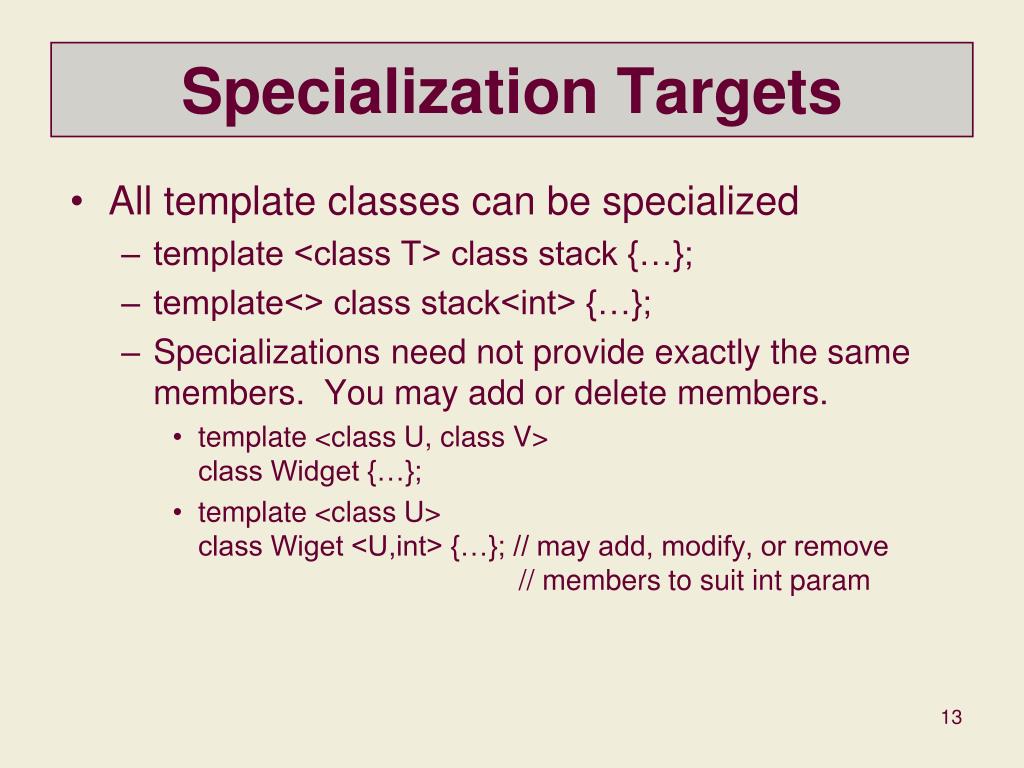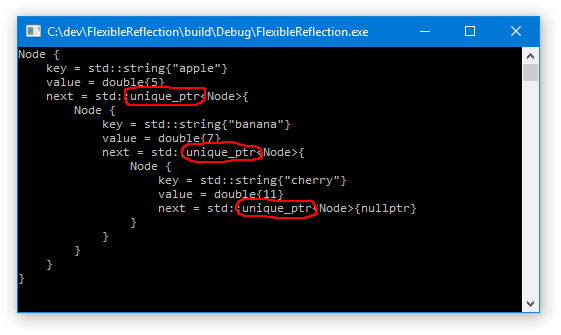Partial Template Specialization
Partial template specialization - Many web browsers, such as internet explorer 9, include a download manager. And it relies on template partial specialization to correctly select the right sprintf format and leading 0 addition. Only class templates may be partially specialized. For more information, see template specialization. If all of the parameters are specialized it is a full specialization. If a primary template is a member of another class template, its partial specializations are members of the enclosing class template. Consider the case where you want to design a class that stores 8 objects. If a class template is specialized by a subset of its parameters it is called partial template specialization (function templates cannot be partially specialized). It separately and correctly handles different pointer sizes and unsigned long sizes for different oss and architectures. A template can have any number of specializations as long as each specialized type parameter is unique.
The following example defines a template class that takes pairs of any two types and then defines a partial specialization of that template class specialized so that one of the types is int. If the enclosing template is instantiated, the declaration of each member partial specialization is instantiated as well (the same way declarations, but not definitions, of all other members of a template are instantiated). Define partial specialization so one type is int. Explicit specialization may be declared in any scope where its primary template may be defined (which may be different from the scope where the primary template is defined; Explicit specialization is used when the behavior of a function or class for particular choices of the template.
Partial Template Specialization Function C
It separately and correctly handles different pointer sizes and unsigned long sizes for different oss and architectures. If a class template is specialized by a subset of its parameters it is called partial template specialization (function templates cannot be partially specialized). The following example defines a template class that takes pairs of any two types and then defines a partial specialization of that template class specialized so that one of the types is int.
Class template with multiple parameters in c++ example
Explicit specialization may be declared in any scope where its primary template may be defined (which may be different from the scope where the primary template is defined; Many web browsers, such as internet explorer 9, include a download manager. For more information, see template specialization.
PPT Templates PowerPoint Presentation, free download ID601907
If a class template is specialized by a subset of its parameters it is called partial template specialization (function templates cannot be partially specialized). The specialization defines an additional sort method that implements a simple bubble sort based. If all of the parameters are specialized it is a full specialization.
constexpr stdvector and stdstring in C++20
And it relies on template partial specialization to correctly select the right sprintf format and leading 0 addition. If a class template is specialized by a subset of its parameters it is called partial template specialization (function templates cannot be partially specialized). Explicit specialization may be declared in any scope where its primary template may be defined (which may be different from the scope where the primary template is defined;
C++ Templates. SFINAE
Define partial specialization so one type is int. If a primary template is a member of another class template, its partial specializations are members of the enclosing class template. Explicit specialization may be declared in any scope where its primary template may be defined (which may be different from the scope where the primary template is defined;
A Flexible Reflection System in C++ Part 2
The following example defines a template class that takes pairs of any two types and then defines a partial specialization of that template class specialized so that one of the types is int. If a class template is specialized by a subset of its parameters it is called partial template specialization (function templates cannot be partially specialized). If all of the parameters are specialized it is a full specialization.
All complete and partial specializations of a template must be declared in the same namespace as the original template. Explicit specialization may be declared in any scope where its primary template may be defined (which may be different from the scope where the primary template is defined; It separately and correctly handles different pointer sizes and unsigned long sizes for different oss and architectures.
For more information, see template specialization. Explicit specialization may be declared in any scope where its primary template may be defined (which may be different from the scope where the primary template is defined; And it relies on template partial specialization to correctly select the right sprintf format and leading 0 addition.
It separately and correctly handles different pointer sizes and unsigned long sizes for different oss and architectures. And it relies on template partial specialization to correctly select the right sprintf format and leading 0 addition. Define partial specialization so one type is int. If the enclosing template is instantiated, the declaration of each member partial specialization is instantiated as well (the same way declarations, but not definitions, of all other members of a template are instantiated). Consider the case where you want to design a class that stores 8 objects. Generally, a download manager enables downloading of large files or multiples files in one session. All complete and partial specializations of a template must be declared in the same namespace as the original template. If a class template is specialized by a subset of its parameters it is called partial template specialization (function templates cannot be partially specialized). For more information, see template specialization. Explicit specialization is used when the behavior of a function or class for particular choices of the template.
If a primary template is a member of another class template, its partial specializations are members of the enclosing class template. The following example defines a template class that takes pairs of any two types and then defines a partial specialization of that template class specialized so that one of the types is int. Many web browsers, such as internet explorer 9, include a download manager. Only class templates may be partially specialized. The specialization defines an additional sort method that implements a simple bubble sort based. A template can have any number of specializations as long as each specialized type parameter is unique. Explicit specialization may be declared in any scope where its primary template may be defined (which may be different from the scope where the primary template is defined; If all of the parameters are specialized it is a full specialization.







